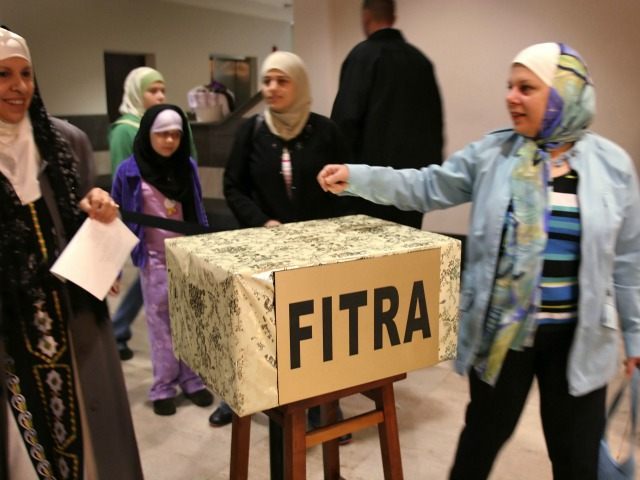Data from the United States Census Bureau show that languages spoken in Muslim countries are surging into U.S. households due to rapid growth in immigration from Muslim nations.
The Census Bureau’s 2014 American Community Survey (ACS) reveals that Arabic and Urdu – Pakistan’s national language– are the fastest-growing foreign languages spoken at home, according to a new report by the Center for Immigration Studies.
After five decades of large-scale immigration, a record 63.2 million U.S. residents, or more than one-in-five, speak a language other than English when at home.
Previous reports have shown that the United States is now the second largest Spanish speaking country in the world. But the new census study shows that the fastest-growing foreign languages, in percentage terms, are languages spoken by immigrants from Muslim-majority countries.
Between 2010 and 2014, there was a 29 percent increase in Arabic, a 23 percent increase in Urdu, and a 9 percent jump in Persian, which is spoken in Iran.
The findings of this report reinforce other studies, which show that Muslim immigration is the fastest growing bloc of new immigrants. Every year the United States voluntarily imports more than a quarter of a million– or 280,000– Muslim migrants (this figure includes permanently resettled immigrants, guest workers, refugees and foreign students). All of these immigrants are invited into the U.S. on visas and therefore have the opportunity to collect welfare, resettle their relatives, and eventually apply for citizenship and voting rights.
Arabic is now the most common language spoken by refugees, and 91.4 percent of recent refugees from the Middle East are on food stamps.
The report’s author, Steve Camarota, told Breitbart News:
“Immigration is not just an economic issue. English as our common language is part of the glue that holds our country together. These numbers suggest that the levels of immigration are so high that it may strain that. After the last great wave of immigration more than a century ago, the level of immigration was reduced and remained low for half a century, which helped with assimilation. With no pause in immigration levels in sight, the nation is headed into uncharted territory.”
Since 1980, the share of the population that speaks a foreign language at home more than doubled in Nebraska, more than tripled in Virginia, and more than quadrupled in North Carolina, says the report.
Nearly one in seven school-aged children in Minnesota, Georgia, North Carolina, Utah and Virginia speak a language other than English at home. In California, nearly one in every two school children, or 43.9 percent, speak a language other than English at home.
The number of people in America who speak a language other than English at home is now larger than the populations of Australia, New Zealand, and Canada combined
Mass Muslim migration has posed unique challenges to assimilation. Equality Now recently issued a report documenting how half a million U.S. girls are at-risk of the gruesome practice of female genital mutilation.
The cost that non-English speakers are imposing on American communities has been well documented in Dearborn, Michigan– which has been called the “Arab capitol of North America.“
For example, in 2014, Eric Holder’s Department of Justice pressured the Crestwood School District in Dearborn Heights to “‘take appropriate action to overcome language barriers that impede equal and meaningful participation by’ students with limited English skills.” The DOJ required that the school district, “provide ESL (English as a Second Language) instruction to all students who do not receive proficient (test) scores,” USA Today reported.
“The agreement also says the district must hire sufficient interpreters and translators so that all letters, notices, and other documents are available in languages needed. The agreement doesn’t specify Arabic, but given that the agreement centered around complaints from Arab-Americans, it will probably include that… Other requirements of the agreement include increased community outreach, more diversity in hiring, and developing anti-retaliation program,” USA Today said.
Donald Trump has made English language patriotism part of his candidacy, but Sen. Marco Rubio has traveled in the opposite direction. He’s conducted numerous interviews in Spanish including an interview in which he said he would not rescind the President’s executive amnesty until some kind of “immigration reform” was in place (i.e. a legislative amnesty).
Rubio has been one of the most aggressive of the Republican hopefuls to offer ideas that would increase the pace of Muslim immigration. Both his “Gang of Eight” immigration plan and his newly introduced I-Squared bill, which would essentially lift the caps on university green cards and triple the number of guest worker admissions, would substantially boost Muslim immigration.
Rubio has also joined Democrats in expressing his desire to expand the resettlement of Muslim refugees above the annual intake of the 280,000 temporary and permanent Muslim migrants the U.S. admits each year. This is part of Rubio’s campaign theme to create a “New American Century.”
While it might seem curious that progressive Democratic politicians like Sen. Al Franken and Sen. Amy Klobuchar would join Republican Sen. Marco Rubio in welcoming a wave of migrants who engage in brutalities against women into their state, the answer may lie in a finding from the Pew Research Center.
Pew found that only 11% of U.S. Muslims identify as Republicans or lean-Republican. Al Franken, whose nail-biter recount allowed him to cast the critical vote for Obamacare’s passage, made an impassioned plea during last week’s refugee hearing for the U.S. to admit even more Muslim migrants.
A separate recent Pew report demonstrated that post-1965 immigrants and their children added 72 million people to the U.S. population.
This means that immigration between 1965 and 2015 added one new resident to the population for every one net birth to the preexisting population– a ratio of one-to-one. As Breitbart News exclusively reported based on analysis from the Senate Immigration Subcommittee, between 2015 and 2065, immigration will add seven new people for every one net U.S. birth produced by today’s population– a ratio of seven-to-one.

COMMENTS
Please let us know if you're having issues with commenting.